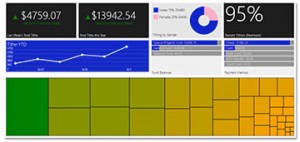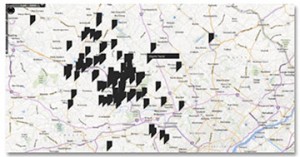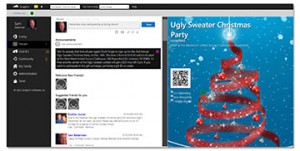
By Sam Batterman
How to mobilize ChMS as a congregational engagement tool
When thinking about church management software, what images come to mind?
• Back office personnel madly typing endless notes into complicated profiles only they understand?
• Trying to get the right incantation to extract the right data into the report which the pastor is breathing down your neck for?
• Recording tithe batches — and going blind on endless rosters for Sunday school — to record attendance from the previous weekend?
Maybe. But, what should church management be?
To answer this question, we should consider how much the congregation has changed in the last 20 years — or even in the past three. The shift among people and their expectations about how to interact with any organization (and how they receive communication and reach out to one another) has changed profoundly.
RELATED RESOURCES
- Church Management software (chMS) “outside the box”
- The evolution of church management software
- Church Management Software Matters (A Lot)
The back story
Our own product, Seraphim, was designed to leverage the very pervasive technologies we use every day, and to apply them to church management and congregational engagement.
More than three years ago, this tool began its life as a safe and closed social network for a teen youth group. We wanted a place that was different than Twitter and Facebook — one with a focus on Biblical resources, digital devotions and everyday life, but without ads and the dangers of sexting. It needed to be a place where teens, teen workers, volunteers and parents could discuss the things that make growing up in today’s culture more challenging, spiritually, than it was 20 (or even 10) years ago.
Over time, Seraphim morphed — intentionally — into a full-blown church management system, integrating the profiles of the social network into the items that are valued and useful in the back office of the church. Events became a vehicle for doing attendance either after the event or during the event on a mobile phone or tablet. We did the jobs of recording attendance and doing safe check-in for children in our own churches.
In doing so, we personally understood the little things that make a huge difference in the time and ease of making these tasks more valuable to ministry, and made them easy for ministry leaders to use. Seraphim isn’t a product that was beneficial to a related industry — such as donor management or non-profit membership — and repurposed for churches as a secondary thought. This tool was built for the church, with its unique mission as the foundation.
Let’s face it: Ministry is complicated
There are dozens of ways to contact people, various events to register for — all vying for the same scarce resources, whether they’re rooms or A/V equipment. Volunteers and staff rotate roles in complicated fashion, and an increasingly growing demographic of worshippers demands technological and self-service capabilities from their home church. Building these features yourself or integrating different packages can be prohibitively expensive and make your church less nimble.
We designed our system to connect the back office to the front door and give users control over the church’s information from any location. It’s a cloud-based system, so there’s no need for servers or special skills to install it and maintain it.
There’s no limit to how many people can use the data and the tools inherent to the system. Users can work from home, the office, while traveling — anywhere there’s an Internet connection. It’s also a mobile system which enables users to access information about the people in the congregation and gives them the ability to reach out to those individuals in multiple ways.
 Simplified, minimalistic look and feel. With a look that pervades software apps on current Windows and Apple products, our team has taken every function and focused on making our system fast, flexible and easy to use. Its design, colors and layout are intended to ensure users enjoy working with it.
Simplified, minimalistic look and feel. With a look that pervades software apps on current Windows and Apple products, our team has taken every function and focused on making our system fast, flexible and easy to use. Its design, colors and layout are intended to ensure users enjoy working with it.
Administration and the back office.
Individuals, families and organizations can be grouped in any way the user wants. Those groups can then be used for attendance, safe check-in and reporting. Unlimited custom fields and tags enable users adapt to new situations. Outreach tools can be used to schedule visits and manage the lifecycle of getting to know visitors in a more rapid manner, so that no one falls through the cracks. Attendance features record attendance rapidly; or, ministry leaders can use their smart phones and tablets to record attendance at the time of the event. So, attendance numbers can be in hand faster — something church leadership teams can definitely appreciate.
One of the biggest complaints about ChMS is how difficult it can be to get data and intelligence out of them. To that end, our team has incorporated dashboards which show everything from the composition of your membership and visitors, to the church’s financial health.
 A generosity dashboard shows last week’s giving, where the church stands YTD (year-to-date), tithing to funds and by method, trends of giving, and the affluence of your church family in the form of a spatial map.
A generosity dashboard shows last week’s giving, where the church stands YTD (year-to-date), tithing to funds and by method, trends of giving, and the affluence of your church family in the form of a spatial map.
 Reports are designed to be simple to use, yet flexible. Users can choose a group, a detail of individuals or families and a report they want to run, and then specify how they want it to look — as a list or as a directory.
Reports are designed to be simple to use, yet flexible. Users can choose a group, a detail of individuals or families and a report they want to run, and then specify how they want it to look — as a list or as a directory.
Users can even create mailing labels or name tags bearing attendance bar codes which work with safe check-in functionalities. They can sort by any field, and toggle the fields they want to include in the report.
 Geographic and spatial information about the congregation enables church leaders to decide where to establish a satellite church, where to add a community group, or even how to modify its bus routes to accommodate more visitors. Our system’s mapping directory — built into the application — lets users overlay bus routes and employ tactics for getting people that need the message the church is called to deliver. Turn-by-turn directions are available to help ministry teams focus on their mission.
Geographic and spatial information about the congregation enables church leaders to decide where to establish a satellite church, where to add a community group, or even how to modify its bus routes to accommodate more visitors. Our system’s mapping directory — built into the application — lets users overlay bus routes and employ tactics for getting people that need the message the church is called to deliver. Turn-by-turn directions are available to help ministry teams focus on their mission.
 Safe check-in and check-out
Safe check-in and check-out
Staffed or self-check-in stations let users check children into classes in five seconds or less. The system supports barcodes, PINs, smart phones with QR Codes, passwords and facial recognition, and other biometric authentications are slated for implementation this year. Check-in automatically takes attendance, too.
The system also supports lanyards, pagers and tracks allergy information. Labels can be customized to include a QR or security code, parents’ names and allergy information. During the service, parents can see where their children are using their smart phones.
 Communities and social networks
Communities and social networks
Beyond just Facebook, our system is designed to create unlimited communities to match a congregation’s complexity. For example, a teen group or addiction ministry can be created in about a minute. Members can instant-message each other in a secure, closed environment and share photos, files, web links — even take informal polls. Each member gets a profile page. Also accommodated are unlimited discussion groups, prayer lists, and a care center.
 A semantics bible, built-in
A semantics bible, built-in
A digital bible based on semantics is a the heart of our system. This means users can view the scripture by verse, structure, geography, chronology and topic, as well as share and encourage one another in bible reading. They can memorize verses in a new way and search for anything in the Bible — and understand it faster and more comprehensively.
Today’s digital generation is unlikely to read a Matthew Henry commentary; but, seeing the Bible as a “Periodic Table” helps them understand the collections of the bible using a modern approach. Our system uses visualizations such as tag clouds to help people find concentrations of verses based on a topic.
Security and delegation
Built-in security functionalities let users control who’s an administrator or a moderator, as well as specify who can see tithes and contributions and who can delegate authority to others.
Think of our system like a utility, but for information rather than energy. Service can be added (immediately) as needed.
Sam Batterman is the co-founder and president of Seraphim Software, based in Collegeville, PA. Prior to Seraphim, he spent 22 years in the software industry, including 13 years at Microsoft working on Business Intelligence and Visualization technologies.


